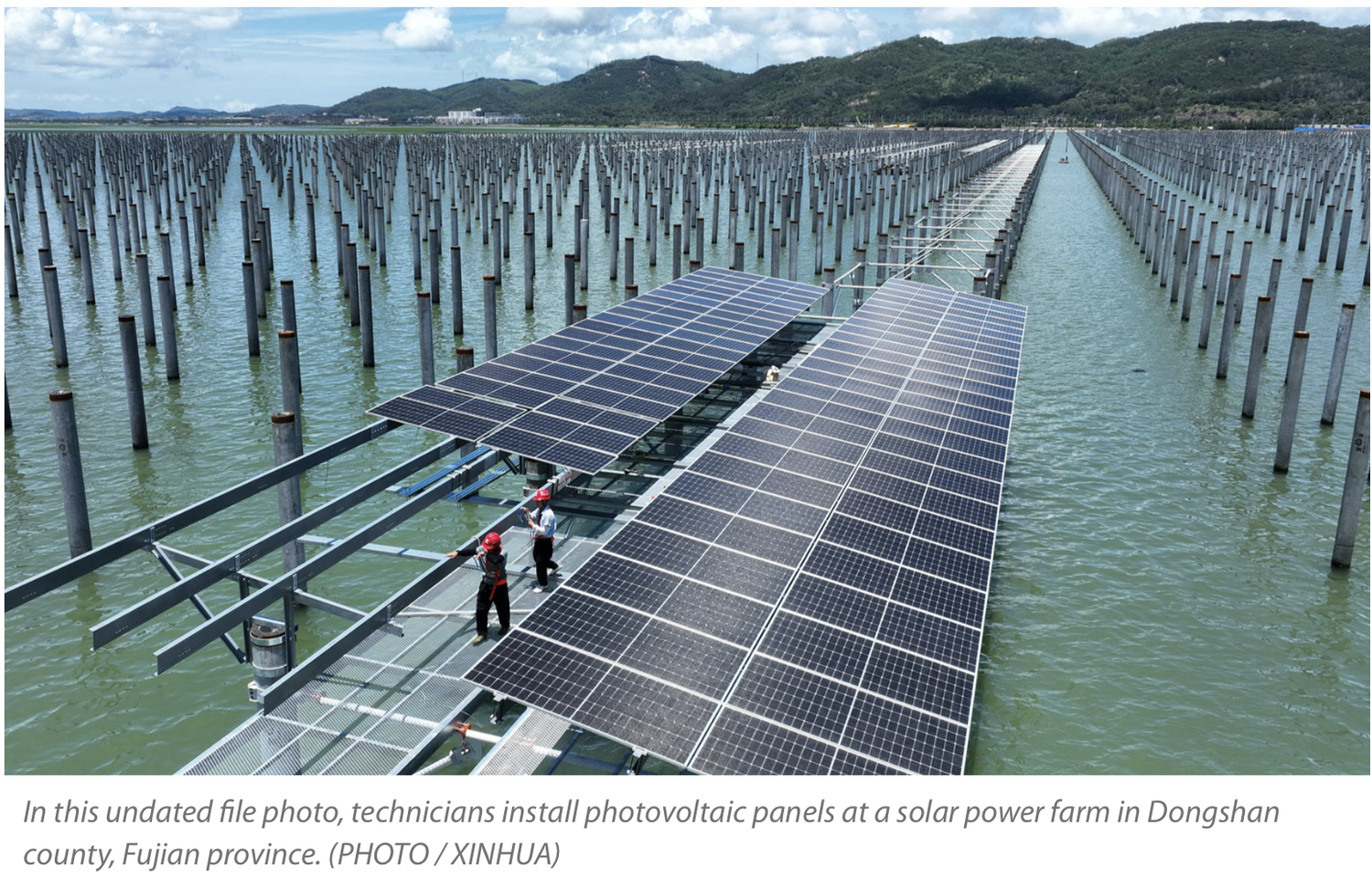Green Energy Transition for a Sustainable Future: China’s New Nationally Determined Contributions to Address Climate Challenges
Yalin Xin, PhD, is associate professor of intercultural studies at William Carey International University and the Director of WCIU’s Institute of China Studies. His research interest includes Christian renewal and revitalization movements and Christianity in China.
WCIU Journal: Area Studies Topic
October 17, 2025
by Yalin Xin
On September 24, 2025, Chinese President Xi Jinping addressed the United Nations Climate Summit, recognizing the pivotal moment for global climate governance as the Paris Agreement reached its 10th anniversary. Xi emphasized the importance of maintaining fairness and equity in the global green transition, stating that it “should serve to narrow rather than widen the North-South gap,” and urged developed countries to take responsibility for reducing emissions and contribute more financial and technological support to developing countries. In the face of urgent need for green development, global communities must enhance cooperation in green technologies and industries.
Taking climate response as “an urgent yet long-term task,” Xi announced China’s new NDCs for the next ten years:
China will, by 2035, reduce economy-wide net greenhouse gas emissions by 7% to 10% from peak levels, striving to do better; increase the share of non-fossil fuels in total energy consumption to over 30%; expand the installed capacity of wind and solar power to over six times the 2020 levels, striving to bring the total to 3,600 gigawatts; scale up the total forest stock volume to over 24 billion cubic meters; make new energy vehicles the mainstream in the sales of new vehicles; expand the National Carbon Emissions Trading Market to cover major high-emission sectors; and basically establish a climate adaptive society. (The State Council, PRC, 2025)
This is significant because, as one of the top three largest annual emitters of greenhouse gases, alongside the U.S. and the European Union, its NDCs and green energy transition have a substantial impact on global climate trends. As a global leader in addressing climate change, its investment in renewable energy, technological innovation, and global climate policy engagement plays an inseparable part in global climate governance.
It is helpful to put some of these NDCs in the context of some key green energy developments in China. Research institutions and publications such as Global Energy Monitor and EMBER provide us with statistics and analysis of the recent history of China’s green energy development in perspective of the global energy transition.
China is fast-tracking a 1.3 TW pipeline of utility-scale solar and wind projects. Of this, 510 GW is already under construction, primed to be added to China’s 1.4 TW solar and wind capacity already in operation.
As of March 2025, China has emerged as the world’s offshore wind powerhouse — growing from under 5 GW in 2018 to 42.7 GW in 2025 (50% of global capacity).
China's construction capacity exceeds 40%, as 287GW has broken ground. This is roughly four times the global average for capacity under construction (9%).
In Q1 2025, China’s wind and solar capacity surpassed its thermal (coal and gas) capacity for the first time, supplying nearly 23% of the country’s total electricity consumed, up from roughly 18% in Q1 of 2024, according to the National Energy Administration (NEA).
China’s solar and wind operating capacity has soared to 1.4 TW and now accounts for 44% of the world’s operating utility-scale solar and wind capacity, more than the combined total of the European Union, United States, and India (Global Energy Monitor 2025)
These are encouraging data and insights for the global community in their corporate effort to address climate challenges. The path to regain the harmony between man and nature is urgent and requires painstaking efforts. The task will not be completed without mutual support and cooperation among members of the inhabited earth. In the forward to EMBER’s China Energy Transition Review 2025, His Excellency Dr. Suwit Khunkitti, Chair of the Advisory Committee of the International Society for Energy Transition Studies, highlights the significance of China’s green-led development model as a reference for global communities:
Through scale, innovation and long-term planning, China is demonstrating that decarbonisation can go hand in hand with industrial upgrading, job creation and improved quality of life. These lessons carry significance not only for China, but for the broader region – especially Southeast Asia, where energy demand is rising and development needs remain pressing. (EMBER 2025)
Citations
The State Council, PRC. 2025. “Honoring Commitments with Concrete Actions and Jointly Writing a New Chapter in Global Climate Governance - Chinese President Xi Jinping’s Remarks at UN Climate Summit.” Accessed Oct. 1, 2025. https://english.www.gov.cn/news/202509/25/content_WS68d47dd1c6d00ca5f9a066a7.html
Global Energy Monitor. 2025. “China’s Solar and Onshore wind capacity reaches new heights, while offshore wind show promise.” Accessed September 25, 2025. https://globalenergymonitor.org/wp-content/uploads/2025/06/GEM-China-wind-solar-brief-July-2025.pdf
EMBER. 2025. “China Energy Transition Review 2025.” Accessed Oct. 1, 2025. https://ember-energy.org/latest-insights/china-energy-transition-review-2025/
China Daily Hong Kong. 2025. “White paper: China world’s largest investor in energy transition.” Accessed September 28, 2025. https://www.chinadailyhk.com/hk/article/591755




